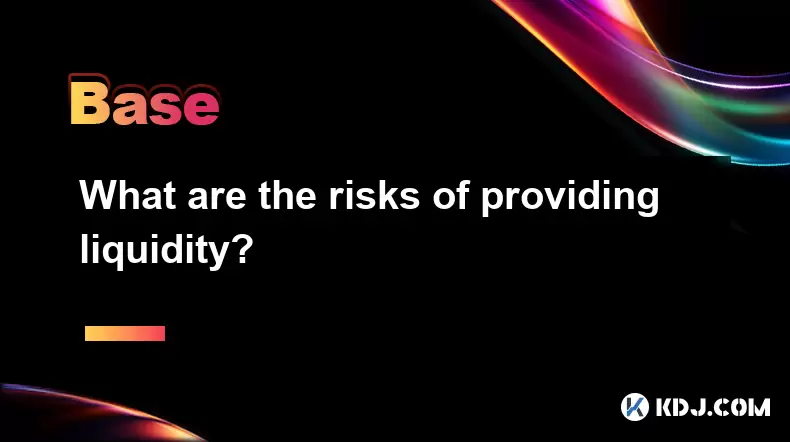-
 Bitcoin
Bitcoin $118300
-0.58% -
 Ethereum
Ethereum $3825
0.11% -
 XRP
XRP $3.137
-0.71% -
 Tether USDt
Tether USDt $0.9999
-0.01% -
 BNB
BNB $803.9
-3.37% -
 Solana
Solana $181.5
-1.94% -
 USDC
USDC $0.9999
0.01% -
 Dogecoin
Dogecoin $0.2238
-2.51% -
 TRON
TRON $0.3358
2.12% -
 Cardano
Cardano $0.7844
-2.16% -
 Hyperliquid
Hyperliquid $43.31
-1.48% -
 Sui
Sui $3.807
-4.04% -
 Stellar
Stellar $0.4203
-1.96% -
 Chainlink
Chainlink $17.79
-3.00% -
 Bitcoin Cash
Bitcoin Cash $567.8
-1.34% -
 Hedera
Hedera $0.2614
-4.30% -
 Avalanche
Avalanche $24.19
-4.46% -
 Litecoin
Litecoin $109.2
-0.74% -
 UNUS SED LEO
UNUS SED LEO $8.969
-0.01% -
 Toncoin
Toncoin $3.404
3.97% -
 Ethena USDe
Ethena USDe $1.001
-0.01% -
 Shiba Inu
Shiba Inu $0.00001307
-3.19% -
 Uniswap
Uniswap $10.33
-1.23% -
 Polkadot
Polkadot $3.884
-4.06% -
 Monero
Monero $312.9
-1.87% -
 Dai
Dai $1.000
0.01% -
 Bitget Token
Bitget Token $4.537
-2.24% -
 Pepe
Pepe $0.00001156
-3.40% -
 Cronos
Cronos $0.1437
-0.89% -
 Aave
Aave $282.8
-2.77%
What are the risks of providing liquidity?
Liquidity providers in DeFi earn fees by depositing crypto pairs into pools but face risks like impermanent loss, smart contract vulnerabilities, rug pulls, and market volatility.
Jul 30, 2025 at 02:15 am

Understanding Liquidity Provision in Decentralized Finance
In decentralized finance (DeFi), providing liquidity refers to depositing cryptocurrency pairs into a liquidity pool on a decentralized exchange (DEX) such as Uniswap or SushiSwap. Liquidity providers (LPs) earn fees from trades that occur within the pool they contribute to. However, this process is not without risks, and understanding them is crucial before participating.
Impermanent Loss: A Major Risk for Liquidity Providers
One of the most significant risks of providing liquidity is impermanent loss. This occurs when the value of the assets in the liquidity pool changes relative to each other. Since most pools require a 50/50 ratio of two tokens, any price movement can cause the automated market maker (AMM) to rebalance the pool. This rebalancing may result in a lower value of assets when withdrawn compared to holding them outside the pool.
For example, if you deposit ETH and USDT into a pool and ETH’s price increases significantly, the AMM will sell ETH and buy USDT to maintain balance. When you withdraw your share, you may end up with less ETH than if you had simply held it.
Smart Contract Vulnerabilities and Exploits
Another risk stems from smart contract vulnerabilities. Liquidity pools operate using smart contracts, which are self-executing code deployed on the blockchain. If these contracts have bugs or are exploited by malicious actors, funds can be lost permanently.
Many DeFi platforms have suffered from hacks and exploits, sometimes resulting in millions of dollars in losses. Even well-audited platforms are not immune to unforeseen issues. Therefore, it's essential to only use trusted platforms with a strong security track record and transparent audits.
Rug Pulls and Fraudulent Projects
A rug pull is a type of scam where developers abandon a project and drain the liquidity pool, leaving investors with worthless tokens. This is especially common in newer or less reputable DeFi projects. Rug pulls can happen suddenly, and once the liquidity is removed, users can no longer trade or withdraw their funds.
To mitigate this risk, always research the team behind a project, check for token lock-ups, and verify if the contract is renounced. Community feedback and audits can also help identify potentially fraudulent projects.
Market Volatility and Impermanent Loss Amplification
High market volatility increases the likelihood and severity of impermanent loss. Assets with high price swings—such as many altcoins—pose greater risk when used in liquidity pools. The more volatile the assets, the more frequently the AMM will rebalance the pool, increasing the divergence from the original deposit value.
Liquidity providers should be cautious when choosing high-risk tokens and consider pairing volatile assets with stablecoins to reduce exposure. However, even stablecoins are not completely immune to impermanent loss due to occasional de-pegging events.
Gas Fees and Transaction Costs
Frequent liquidity provision and withdrawal can incur high gas fees, especially on networks like Ethereum during peak times. These fees can eat into the profits earned from liquidity provision. It’s important to calculate whether the yield from fees and incentives outweighs the cost of entering and exiting a pool.
Some DeFi platforms offer gas-efficient solutions or operate on layer-2 networks to reduce transaction costs. Always consider the total cost of participation, including gas fees, before committing funds.
Regulatory Uncertainty and Compliance Risks
The regulatory environment around DeFi and liquidity provision is still evolving. In some jurisdictions, providing liquidity may be considered a financial service, potentially subject to taxation or regulation. Changes in laws could affect the legality of certain DeFi activities or impose reporting obligations.
Always consult with a tax professional or legal advisor to understand how liquidity provision may affect your compliance obligations. Keeping accurate records of deposits, withdrawals, and earnings is essential for regulatory compliance.
Concentration Risk and Diversification
Putting all your funds into a single liquidity pool increases concentration risk. If that pool experiences a hack, rug pull, or significant impermanent loss, your entire investment could be affected. Diversifying across multiple pools and asset types can help mitigate this risk.
However, diversification must be balanced with risk tolerance and understanding of the assets involved. Blindly spreading funds across many pools without research can lead to unexpected losses.
Frequently Asked Questions
Q: Can impermanent loss be avoided entirely?
While impermanent loss cannot be completely eliminated in AMM-based pools, it can be minimized by choosing stablecoin pairs or pools with low price volatility. Holding the same assets outside the pool during periods of high volatility may also help reduce exposure.
Q: How do I know if a liquidity pool is safe?
Check if the pool’s smart contracts have been audited, review the team's identity and reputation, and look for community feedback on forums like Reddit or DeFi review platforms. Avoid pools with anonymous developers or unverified contracts.
Q: What happens if the price of one token in the pool drops significantly?
If one token’s price drops sharply, the AMM will rebalance the pool, which may result in a larger portion of the stable or less volatile token being retained. Upon withdrawal, the value of the deposited assets may be lower than if they had been held separately.
Q: Are there insurance options for liquidity providers?
Some DeFi platforms and third-party services offer coverage against smart contract failures or hacks, though this is not standard. Protocols like Nexus Mutual or InsurAce provide coverage, but they come with premiums and specific terms. Always read the fine print before purchasing coverage.
Disclaimer:info@kdj.com
The information provided is not trading advice. kdj.com does not assume any responsibility for any investments made based on the information provided in this article. Cryptocurrencies are highly volatile and it is highly recommended that you invest with caution after thorough research!
If you believe that the content used on this website infringes your copyright, please contact us immediately (info@kdj.com) and we will delete it promptly.
- IPO, Bitcoin, and Treasury: A New Era of Crypto Investment?
- 2025-07-30 14:30:12
- Bitcoin, Binance, and Whales: Decoding the Latest Market Moves
- 2025-07-30 14:50:12
- Sinkhole Rescue: Migrant Workers' Heroism Sparks Fundraising in Tanjong Katong
- 2025-07-30 14:50:12
- Strategy, Bitcoin, and IPOs: A New York Perspective on 2025's Biggest Moves
- 2025-07-30 14:55:11
- TROLL Memecoin Mania: From Online Buzz to Market Reality
- 2025-07-30 14:55:11
- Coinbase, Circle, and the Power of Partnership: A New Era for Crypto?
- 2025-07-30 12:30:12
Related knowledge

What is the difference between CeFi and DeFi?
Jul 22,2025 at 12:28am
Understanding CeFi and DeFiIn the world of cryptocurrency, CeFi (Centralized Finance) and DeFi (Decentralized Finance) represent two distinct financia...

How to qualify for potential crypto airdrops?
Jul 23,2025 at 06:49am
Understanding What Crypto Airdrops AreCrypto airdrops refer to the distribution of free tokens or coins to a large number of wallet addresses, often u...

What is a crypto "airdrop farmer"?
Jul 24,2025 at 10:22pm
Understanding the Role of a Crypto 'Airdrop Farmer'A crypto 'airdrop farmer' refers to an individual who actively participates in cryptocurrency airdr...

What is the difference between a sidechain and a Layer 2?
Jul 20,2025 at 11:35pm
Understanding the Concept of SidechainsA sidechain is a separate blockchain that runs parallel to the main blockchain, typically the mainnet of a cryp...

What is the Inter-Blockchain Communication Protocol (IBC)?
Jul 19,2025 at 10:43am
Understanding the Inter-Blockchain Communication Protocol (IBC)The Inter-Blockchain Communication Protocol (IBC) is a cross-chain communication protoc...

How does sharding improve scalability?
Jul 20,2025 at 01:21am
Understanding Sharding in BlockchainSharding is a database partitioning technique that is increasingly being adopted in blockchain technology to enhan...

What is the difference between CeFi and DeFi?
Jul 22,2025 at 12:28am
Understanding CeFi and DeFiIn the world of cryptocurrency, CeFi (Centralized Finance) and DeFi (Decentralized Finance) represent two distinct financia...

How to qualify for potential crypto airdrops?
Jul 23,2025 at 06:49am
Understanding What Crypto Airdrops AreCrypto airdrops refer to the distribution of free tokens or coins to a large number of wallet addresses, often u...

What is a crypto "airdrop farmer"?
Jul 24,2025 at 10:22pm
Understanding the Role of a Crypto 'Airdrop Farmer'A crypto 'airdrop farmer' refers to an individual who actively participates in cryptocurrency airdr...

What is the difference between a sidechain and a Layer 2?
Jul 20,2025 at 11:35pm
Understanding the Concept of SidechainsA sidechain is a separate blockchain that runs parallel to the main blockchain, typically the mainnet of a cryp...

What is the Inter-Blockchain Communication Protocol (IBC)?
Jul 19,2025 at 10:43am
Understanding the Inter-Blockchain Communication Protocol (IBC)The Inter-Blockchain Communication Protocol (IBC) is a cross-chain communication protoc...

How does sharding improve scalability?
Jul 20,2025 at 01:21am
Understanding Sharding in BlockchainSharding is a database partitioning technique that is increasingly being adopted in blockchain technology to enhan...
See all articles

























































































